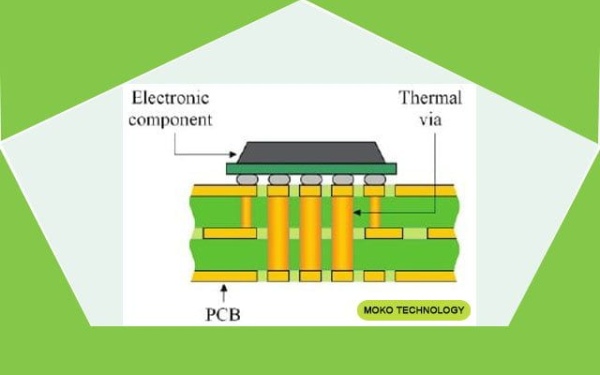Description: FR-4 stands for flame retardant, and it means that the material meets the UL94V-0 standard for inflammability of plastic materials. It ensures that fire does not spread.

What does FR-4 stand for?
“FR-4” stands for “Flame-Retardant,” and “fiberglass epoxy” stands for “fiberglass epoxy.” This phrase refers to the most common material used to make circuit boards.
What is FR-4's dielectric constant?
FR-4 has a dielectric constant of 3.8 to 4.8, depending on the glass weave style, thickness, resin content, and roughness of the copper foil.
What is FR-4 and how is it made?
The glass-reinforced epoxy laminate material FR-4 (or FR4) is a NEMA grade designation. FR-4 is a flame-resistant composite material made out of woven fiberglass cloth and an epoxy resin binder (self-extinguishing).
What is the disadvantage of using FR4 based PCB?
Metal core PCB is the new standard for many firms in the LED market these days. The main reason for this change is that typical FR4 PCBs generate more heat, which interferes with the LEDs' performance.
THE CONNECTION BETWEEN FR-4 AND PCB
Because of these characteristics, FR-4 is an excellent choice for high-quality PCB manufacturing. These qualities, when exploited correctly, can also serve as the foundation for high-quality, low-cost PCBs.
FR4 is the principal insulating backbone of a PCB.
This is the foundation upon which the circuit builds by the manufacturer. The FR4 board then needs lamination with one or more layers of copper foil using heat and adhesive after its manufacturing. Depending on the design of the board, this copper forms the circuits in the finished product and may cover one or both sides.
FR4 properties and materials
The NEMA (National Electrical Manufacturers Association) has established a standard for a glass-reinforced epoxy resin laminate known as FR-4.
- FR stands for “flame retardant,” and it means that the material meets the UL94V-0 standard for inflammability of plastic materials. On all FR-4 PCBs, you can find the 94V-0 code. When the substance burns, it ensures that fire does not spread and that there is a need to extinguish it quickly.
- Its glass transition (TG) is of the order of 115°C to 200°C for the High TGs or HiTGs depending on the manufacturing methods and the resins used. A standard FR-4 PCB will have a layer of FR-4 sandwiched between two thin layers of laminated copper.
- FR-4 makes use of bromine, a fire-resistant chemical element known as a halogen. In most of its applications, it took the place of G-10, a less durable composite.
- The advantage of FR4 is that it has an excellent resistance-to-weight ratio. It does not absorb water, has high mechanical strength, and is effective as an insulator in both dry and wet situations.
Examples of FR-4
Ø Standard FR-4:
This is the standard FR-4 with a heat resistance of 140°C to 150°C, as its name suggests.
FR4 with a high glass transition (TG) of roughly 180°C is a high TG FR4.
Ø CTI FR4 high:
Comparative Tracking Index more than 600 Volts. Insulation plates and board supports are excellent for FR4 without laminated copper.
Factors to consider when choosing the thickness
Ø Component compatibility:
Although FR-4 is useful to make a wide range of circuits. Its thickness has an impact on the components. THT components, for example, are distinct from other components and necessitate a small PCB.
Ø Space-saving:
When designing a PCB, especially for USB connectors and Bluetooth accessories, space-saving is critical. In setups where there is less space, the thinnest boards need to employee.
Ø Design and flexibility:
Thick boards are a better option by most manufacturers over thin ones. If the substrate is too thin while using FR-4, the board may break if the board dimensions are raised. Thicker boards, on the other hand, are more flexible and allow for the creation of V-grooves.
What is the role of environment?
The environment in which the PCB will have to use must be in focus. Thin PCBs are ideal for electronic control units in the medical field because they reduce stress. Heat is more sensitive to boards that are too thin – and hence too flexible. During the component soldering process, they can flex and take on an unfavorable angle.
What do you mean by thickness of a board?
Impedance control: the board thickness indicates the thickness of the dielectric environment, in this case, FR-4, which aids impedance control. When impedance is a consideration, the thickness of the board is a deciding factor to consider.
Why we must choose FR-4?
Because of their low cost, FR4s has become a popular choice for small-series PCB manufacture and electrical prototyping. FR4 isn't a suitable choice for high-frequency BCB. Similarly, if you wish to incorporate your PCBs into items that don't readily accept components.
FR-4 PCB Materials
The substrate for the majority of printed circuit boards is glass-reinforced epoxy laminate. While there are many different laminates on the market, FR-4 is a well-accepted standard material for PCB production. FR-4 is an electrical insulator with a high strength-to-weight ratio that is also flame resistant. Where to buy fr4 PCBS?
Victory PCB standard FR-4 material is a high temperature, high Td, low CTE 150Tg material that is in use for our products. If there is a need for a higher Tg material, we have a 170Tg variant of our normal FR-4 material on hand. We can select this throughout the pricing process.

